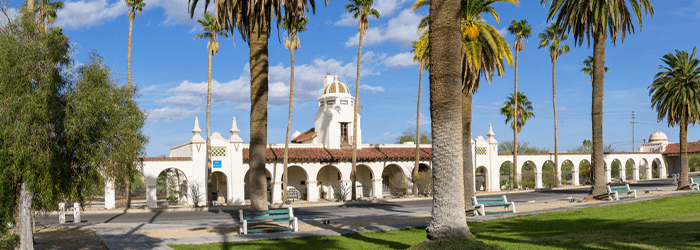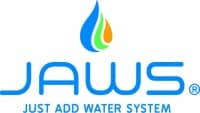Exploring Ajo, Arizona
Like many rural towns and cities throughout the state, Ajo (pronounced ah-ho), is the result of mineral wealth. While some may only know it as the town we drive through to get Mexican auto insurance on the way to Rocky Point, it offers much more.
Situated in the rugged southern Arizona desert, it’s a wonder Ajo is still around today. Lacking easy access to water, establishing the town was no small feat. Both the pioneers and natives utilized creativity and resolve to take advantage of what little the desert offered to establish a foothold.
History
One of Arizona’s five C’s (Copper, Cattle, Cotton, Citrus, and Climate) played a pivotal role in Ajo’s creation. The surrounding area was rich in high-grade copper ore, and because of that, Arizona’s first copper mine emerged. The origins of the city’s name have been debated over the years, primarily between two prevailing theories. “Ajo” is the Spanish word for “garlic,” which grows in abundance around the area. The other potential origin stems from the Tohono O’odham word for paint, “o’oho.” It was known that the natives gathered red paint pigments from the area.
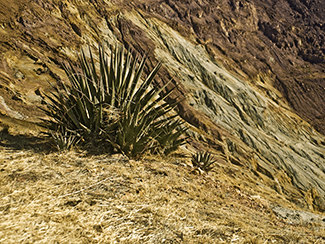
The first modern settlers first arrived in the mid-1800s. A gentleman, Tom Childs Sr., stumbled upon the region and its rich copper deposits on his way to the silver mines in Sonora. His discovery would lead to the Arizona Mining & Trading company run by Child’s friend, Thomas Brady, who began working the rich surface ores. Brady would ship the ores to Wales for smelting throughout the 1850s. Brady’s mining operations would cease shortly after losing a ship loaded with the ore off the coast of Patagonia. The subsequent mining operations were sparse due to a lack of easily accessible water and long supply lines.
Ajo’s resurgence would come about at the turn of the last century thanks to new innovations in smelting technology. The area was first developed in earnest by John Campbell Greenway in 1910. Seeing the potential in the region’s mineral wealth and the opportunities provided by exploiting its resources, Greenway developed a new method of extracting copper ore from the ground utilizing the process of leaching. Greenway and Dr. L.D. Ricketts would pioneer this groundbreaking method of ore extraction, finally taking advantage of the wealth found in the area. This would mark the true beginning of Ajo’s growth in earnest.
In 1917, just seven years after Greenway’s arrival, the open-pit copper mine was in full production. A rail line bolstered the town’s growth and economy by the 1920s. Mining operations continued until 1985, helping shape the region as we know it today.
Climate
Ajo is a hot desert with an abundance of sunshine year-round. Visitors can expect average highs above 100° during the summer months, with lows averaging in the 40s during winter. The mildest weather is between November to March.
Be sure to pack more water than you think you need, plus a sunhat, long sleeves, and lots of sunscreen. This is not an area to wear flip-flops or other open-toed shoes.
Lodging & Dining
1 | Sonoran Desert Inn & Conference Center
Born from a nonprofit agency, the Sonoran Desert Inn and Conference Center began its life as an elementary school building. Built in 1940, modern renovations that turned it into the hotel and conference center began in 2011 thanks to a collective community effort.
2 | La Siesta
For those looking for a rustic setting, consider La Siesta. The “mini resort,” as locals call it, features cozy cabins with modern amenities for the weary traveler.
3 | Guest House Inn
Originally built in 1925 as a guest house for those working at the copper mine, today, the Guest House Inn serves as a bed and breakfast. Designed by Phoenix-based architects Lesher & Mahoney, the house features a modern design rooted in historic design.
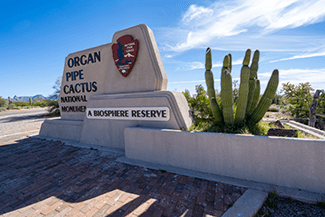
4 | Sonoran Skies Campground
A small private campground, Sonoran Skies Campground, offers both partial and full hook-up sites. Featuring community potlucks, those looking for a family-friendly atmosphere need look no further.
5 | Grannymac’s Kitchen
True to its namesake, Grannymac’s Kitchen features dishes one would expect to find at a beloved family member’s home. Featuring breakfast, lunch, and dinner, Grannymac’s has options for the pickiest eaters.
6 | Agave Grill
The Agave Grill features a classic Americana grill experience, serving up steaks and classic burgers to satisfy any red meat urge. The Agave Grill is open for both lunch and dinner.
Things To Do
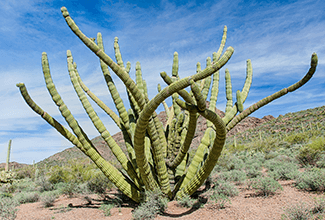 For those who enjoy the outdoors and history, Ajo offers a treasure trove of options to experience when visiting.
For those who enjoy the outdoors and history, Ajo offers a treasure trove of options to experience when visiting.
Organ Pipe National Monument is located just south of Ajo, offering visitors an eye into Southern Arizona’s wild landscape. A protected area, the monument lives up to its namesake being home to a forest of Organ Pipe cacti and the unspoiled wildlife that calls this protected area home.
New Cornelia Mine is Ajo’s inactive open-pit copper mine, and perhaps, the most notable feature of the area. Those interested in an example of the historic industry will want to plan a visit here. It features an onsite museum detailing the history of the mine, in addition to views which put the scale of mining operations in perspective.
Cabeza Prieta National Wildlife Refuge was created in 1939 as a game range to conserve the natural landscape and wildlife found within the area. Today the refuge consists of over 800,000 acres of designated wilderness. The preserve is home to a multitude of species and plants found in the Sonoran desert, including 350 bird species, 100 reptile species, and over 2,000 different types of plants.
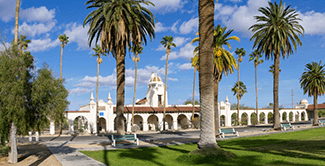 The Ajo Townsite Historic Town Plaza is a must-see for those who appreciate history and the character created from it. The plaza dates back to 1917, during Greenway’s initial development of the area. Filled with archways and stucco buildings said to be designed by Greenway’s wife, Isabella. The historic Ajo Train Depot is considered the centerpiece of the site.
The Ajo Townsite Historic Town Plaza is a must-see for those who appreciate history and the character created from it. The plaza dates back to 1917, during Greenway’s initial development of the area. Filled with archways and stucco buildings said to be designed by Greenway’s wife, Isabella. The historic Ajo Train Depot is considered the centerpiece of the site.
Fun Facts
- Ajo featured Arizona’s first copper mine.
- “Ajo” is also the Spanish word for “garlic,” which grew in abundance in the surrounding area.
- The inactive New Cornelia copper mine is nearly 1.5 miles wide, and 1,100 feet deep at its center.
- Though not technically considered a traditional dam, the dam structure containing the mine’s tailings is considered the largest in the United States. It boasts a whopping volume of 7.4 billion cubic feet.
###
PHOTO CREDIT
- Shutterstock
CONTENT RESOURCES
- https://webcms.pima.gov/cms/One.aspx?portalId=169&pageId=389544
- https://cunews.info/greenway.html
- https://www.theatlantic.com/national/archive/2015/03/ajo-arizona-part-1-a-small-town-pushed-to-the-brink/388976/
- https://en.wikipedia.org/wiki/Ajo,_Arizona
- https://www.nps.gov/orpi/learn/nature/index.htm
- https://www.tripadvisor.com/Attractions-g60924-Activities-Ajo_Arizona.html
- https://kids.kiddle.co/Ajo,_Arizona
- https://ajolasiesta.com/amenities/
- http://www.sonorancc.com/about
- https://sonoranskiescampground.com/
- https://en.wikipedia.org/wiki/New_Cornelia_mine

